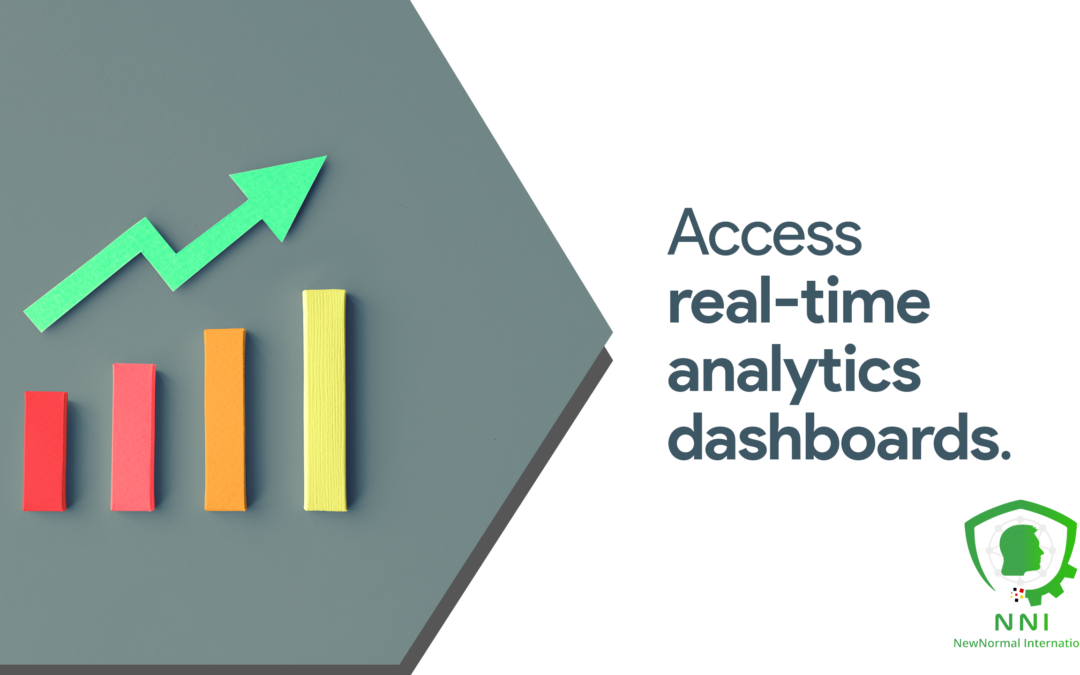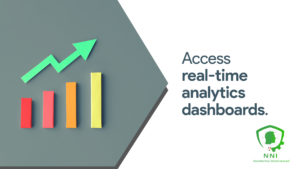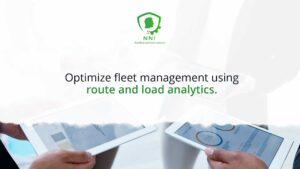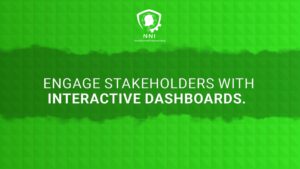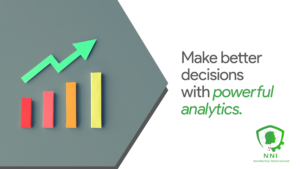Accessing Real-Time Analytics Dashboards for Informed Decision-Making
In our fast-paced, data-driven world, staying ahead of the competition requires businesses to make informed decisions promptly. Real-time analytics dashboards play a pivotal role in this process, offering valuable insights that drive success. In this article, we’ll explore the significance of real-time analytics dashboards and their role in facilitating data-driven decision-making.
Real-time analytics dashboards are the cornerstone of data analytics, enabling organizations to harness the power of their data for competitive advantage. In a landscape where data is often described as the new oil, the ability to transform raw information into actionable insights has become paramount.
What are Real-Time Analytics Dashboards?
Real-time analytics dashboards are graphical representations of an organization’s key performance indicators (KPIs) and metrics. These dashboards are accessible through web-based tools or software, displaying data in an easily digestible format. They enable users to monitor data continuously and make well-informed decisions based on the most current information available.
The Significance of Real-Time Insights:
Access to real-time insights can make or break a business’s success. In today’s hyper-competitive market, companies need to react swiftly to changing conditions and emerging opportunities. Real-time analytics dashboards provide a clear view of the current state of affairs, allowing businesses to adapt and respond promptly. Whether it’s monitoring website traffic, social media engagement, or sales figures, real-time data is crucial for making informed choices.
Facilitating Data-Driven Decision-Making:
Data-driven decision-making is a process in which organizations base their strategies and choices on data analysis rather than intuition. This approach ensures that decisions are grounded in facts, reducing the risk of costly mistakes. Real-time analytics dashboards are instrumental in this process, as they provide a real-time view of a business’s performance and help identify trends and anomalies.
Data Visualization:
Real-time analytics dashboards leverage data visualization techniques to present information in an understandable and compelling manner. These visual representations can take the form of graphs, charts, maps, and tables, making complex data more accessible to a wider audience. Data visualization helps stakeholders quickly grasp the insights they need, fostering better decision-making.
Enhancing Productivity and Efficiency:
Real-time analytics dashboards also enhance productivity and efficiency within an organization. By providing a centralized platform for data access and analysis, they reduce the time and effort required to gather information from multiple sources. This efficiency gain enables employees to focus on strategic tasks, rather than spending excessive time on data collection and manual analysis.
Customer-Centric Decision-Making:
Real-time analytics dashboards have proven invaluable in understanding customer behavior. Businesses can track website traffic, user engagement, and conversion rates in real time, enabling them to tailor marketing strategies and customer interactions. This customer-centric approach is essential for building strong, lasting relationships with clients and ensuring that products and services meet their evolving needs.
Identifying Opportunities and Threats:
In a constantly changing business landscape, staying ahead of the competition often comes down to recognizing opportunities and potential threats. Real-time analytics dashboards make it easier to spot emerging trends and market shifts. They empower organizations to capitalize on opportunities swiftly or mitigate risks before they escalate.
Compliance and Quality Control:
For industries with regulatory requirements, such as healthcare and finance, real-time analytics dashboards are indispensable for ensuring compliance and maintaining quality control. These dashboards enable organizations to monitor and report on key metrics, ensuring they adhere to industry regulations and maintain high standards of quality.
The Future of Real-Time Analytics:
The field of real-time analytics is continuously evolving. As technology advances, we can expect more sophisticated and intuitive dashboards. Machine learning and artificial intelligence will play a significant role in predicting future trends and assisting with decision-making. Additionally, increased integration with the Internet of Things (IoT) will provide real-time data from a wide range of sources, offering a more holistic view of an organization’s operations.
Real-time analytics dashboards are indispensable tools for businesses seeking to make data-driven decisions in a rapidly changing world. These dashboards offer real-time insights, facilitate data-driven decision-making, enhance productivity, and empower organizations to adapt swiftly to changing conditions. As the business landscape continues to evolve, the importance of real-time analytics cannot be overstated.
As you explore the realm of real-time analytics, keep in mind the importance of choosing the right tools and software that align with your business needs. Whether you’re a small startup or a large corporation, real-time analytics dashboards can be customized to suit your unique requirements, providing the key insights you need to excel in your industry.
#DataAnalytics #RealTimeInsights #BusinessDecisionMaking #DataVisualization #DataDrivenDecisions


